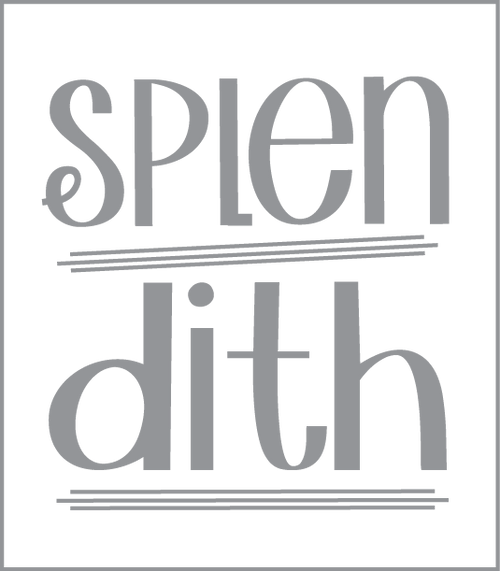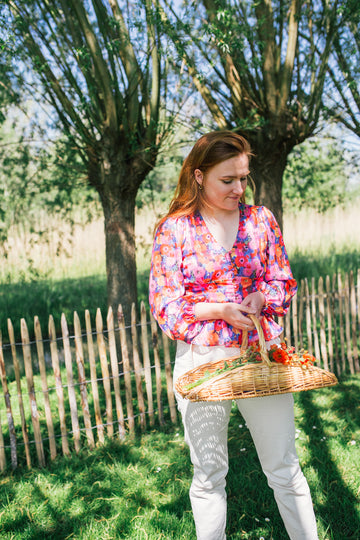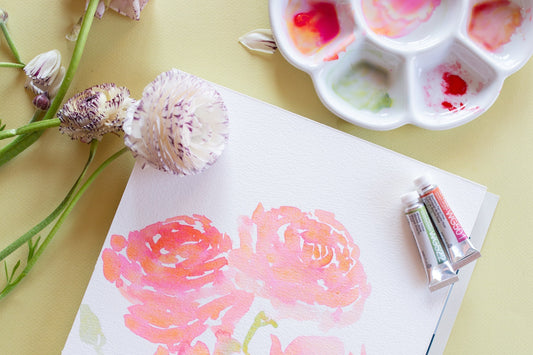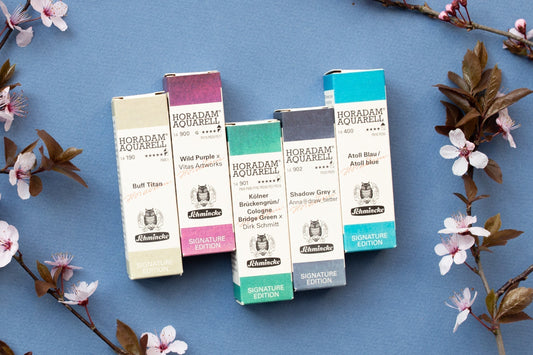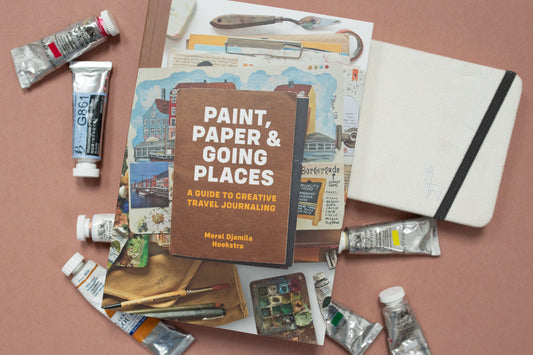If you want to learn to embroider, you will most likely start with the stitches! In this video I show you how to make the basic stitches. You can see this easiest on the video, but I have also described it for you :).
Before you start stitching, you will obviously need to tie a knot in the bottom of your yarn. To do this, make a double knot at the very bottom of the thread and then cut your yarn nice and short. If you do not cut the yarn under the button properly short, there is a chance that it will come up again with further stitches. So you can embroider more neatly if you cut it short.
Let's get started!
Running stitch
The running stitch is the most basic embroidery stitch there is.
- come from behind the fabric with the needle through the fabric.
- A little further you go back with the needle through the fabric.
- And then you come forward with the thread again. And with an equal distance again you go through the fabric. It is nice if you keep the distance between the stitches the same.
- Repeat.
You can use this stitch straight, but you can also vary it by making figures with it
Back stitch
- You start the same way as with the running stitch. You bring the needle forward and bring the thread up.
- And then you bring the thread down a little further.
- Then bring the thread up again with an equal distance.
- Instead of continuing, now go back and pass the needle through the same stitch you just went down. (VIDEO ERROR) Then you immediately see that they fit together nicely.
- And you keep repeating that.
Split stitch
- With the split stitch you make sure you have a double thread, you put the thread through the eye of the needle and then pull it halfway through. Then you will have an equal amount of yarn on both sides.
- Pass the thread from the back to the front.
- Bring the thread back a little further.
- Bring the thread up again at the bottom.
- And on the next stitch, pierce between the two strands with the needle. This way you split the yarns apart.
- And repeat.
Satin stitch
This is the stitch I use by far the most, as well as many others. You can easily embroider larger surfaces with it and it looks beautiful.
- You start at the bottom again and bring the thread back down.
- With the next stitch you come up again exactly next to the other stitch and then place the new stitch parallel to it.
- Continue to repeat this until you have filled the desired surface area.
I show an extra variation on this in the video!
Voice stitch
We continue with the stem stitch, which you can use for beautiful lines or flower stems, for example.
- You bring the thread up again
- Then you make a basic stitch, but you don't tighten it all the way.
- Halfway through this stitch you come up with the thread again.
- The next stitch you make, make one and a half stitches.
- Then you stitch back again, bridging two stitches each time so that you have two threads running next to each other, without them running exactly parallel.
French Knot
I found this stitch really difficult to learn, I kept pulling the thread through the fabric but the knot did not stay in place.
- You come up with the wire.
- Then you turn under the wire and then you turn run the needle around your yarn a few times, about 3-4 times depending on how big you want the knot to be.
- Then you put the other thread under the needle and only then insert the needle through the fabric in almost the same place.
Keep the yarn tight around the needle, then the button will look best.
Lazy Daisy
And the last stitch I will show you now is the lazy Daisy, a very nice stitch if you want to embroider flowers.
- You come up with the wire again.
- Make a loop and bring the needle back down to almost the same spot. You can make the loop as big or small as you want.
- Then you come up again with the thread in the far corner of the loop and make a short stitch around it.
- Then you keep repeating in the shape you like.
Hopefully it is completely clear to you! If you have any questions, please let us know!
Love,
Judith
